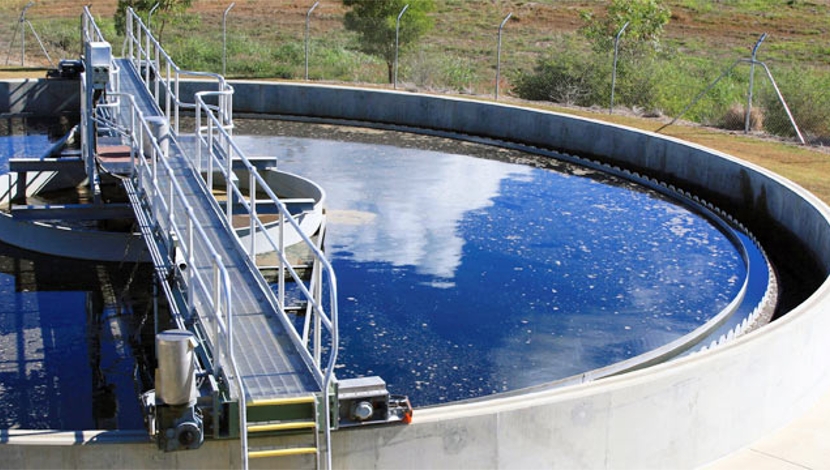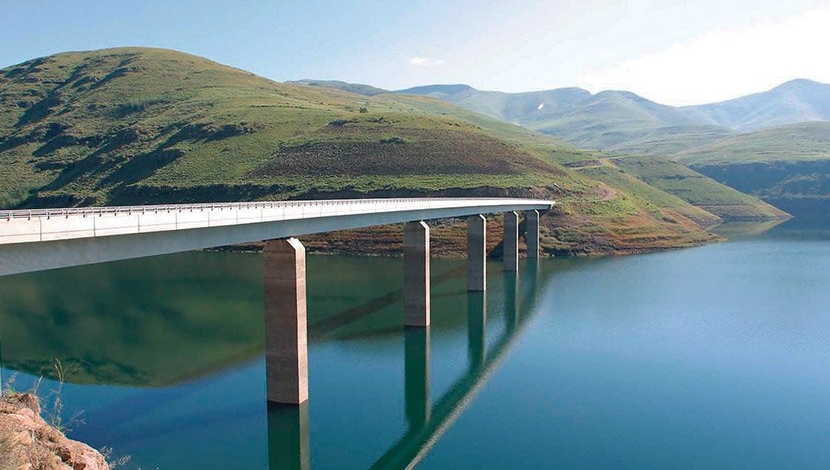
The South African Institution of Civil Engineering (SAICE)has voiced its concern upon learning of Minister of Water and Sanitation (DWS), Ms Nomvula Mokonyane’s announcement of the signing of an agreement with her Cuban counterpart in Havana to pave the way for 37 Cuban engineering specialists to come and fill the existing critical technical gaps in the DWS. In this interesting press release, we hear what they have to say.
South Africa has world-class civil engineering professionals in the water sector. Should the Department of Water and Sanitation have launched their “recruitment drive to find skilled professionals to deal with South Africa’s water problems” in South Africa, with the same remuneration and incentives, SAICE is confident that many a civil engineering practitioner, who knows South Africa’s water challenges inside out, would have been available to assist in ‘sorting’ these out.
Should South African engineers be offered the same incentives as the Cuban engineers in rural communities, national and provincial infrastructure departments, and local authorities, they would probably be attracted to apply. The money spent on establishing and accommodating these engineers in South Africa could possibly be better spent re-looking current salaries and working environments in these areas to the benefit of civil engineering professionals, a number of whom are unemployed, thereby creating sustainable jobs within South Africa.
Manglin Pillay, CEO of SAICE, states, “Our engineers need to get first choice. We have excellent, experienced engineers both locally, as well as those who are currently working outside of South Africa. Government needs to make strides to attract South African engineers back to South Africa and back into our government sector where they are most needed. If there is a shortage thereafter, then the whole world can join us.”
“It must be noted that there is immense confusion on who to approach if one has to deal with these issues. The possibilities include approaching individual infrastructure departments like the national Departments of Transport, Water and Sanitation, Public Works, Housing, Corporate Governance and Traditional Affairs. Unfortunately, very often, once communication has been established, Ministers, DGs and/or DDGs change quickly due to various circumstances. Continuity is thus prevented and the process of establishing contact and relationships needs to start all over again.”
Bringing Cuban engineers to South Africa will also, unfortunately, not bridge the gap to solve government’s lack of communication with the civil engineering fraternity to finding solutions for our water problems.
Some of these issues have been discussed at the Civilution Congress hosted by SAICE in April 2014, where the Civilution Forum, consisting of various voluntary built environment associations, was established.
Approaching government raises the challenge that when engineers, and particularly engineers who are business owners, raise these concerns, they fear being marginalised from further project work with government. SAICE has, however, been raising these concerns on behalf of its members (individual civil engineering practitioners) and continues to offer assistance to government to resolve these key challenges.
Peter Kleynhans, 2013 president of SAICE, remarks, “Above all we must realise that we need one another; one party cannot perform without the other. We must act as a unified team, with one single common goal – a better and more prosperous country for all.”
Should government not rise to solving the infrastructure problems, i.e. provision of water and sanitation, housing, roads, etc.by using the civil engineering industry to soften the plight of those protesters currently being shot at for not having the basics ensconced in our Constitution?
Stanford Mkhacane, 2014 president of SAICE, opines that, “The best thing for government would be to come together with SAICE and the Civilution Forum to coin strategies to address the long-term needs of the country. We had begun with our initiatives when we went to see the DWS.”
One cannot blame civil engineering practitioners if they start feeling alienated by the very government that will not be able to answer to the NDP goals without them, as they are essential to any infrastructure development in future.
Dr Martin van Veelen, 2012 president of SAICE, stated, “South Africa is blessed with a highly competent and experienced corps of engineering practitioners. It is one of the few countries on the African continent that does not need consultants from Europe or other countries to solve the challenges of a developing country. However, the centre of gravity of the accumulated wisdom lies in an ageing, predominantly white and male group of professionals. This is certainly not politically correct, but it is a fact. The country cannot afford to disregard this boon if the objectives of the National Development Plan (NDP) are to be achieved.”
Unfortunately this experience, expertise and wisdom will only be available to South Africa for the next five to seven years before they really have to retire or worse, start dying.
What makes importing Cuban engineers even worse, is that the department’s spokesperson, Themba Khumalo, in 2013 said that this agreement was one of many to be signed with a number of countries in a bid to deal with the water crisis. He further contended that the Cubans would play an important role because South African engineers and hydrologists did not want to work in rural areas.
Furthermore, Khumalo asserted that the Cuban engineers will be deployed in rural and disadvantaged areas to, as reiterated in the media release of the DWS of 21 October 2014:
• Provide geo-hydrology and engineering services in rural areas and other disadvantaged areas where such services are inadequate
• Exploit the available water resources
• Provide the infrastructure for water-supply
• Enhance capacity building through training and support of local staff, and
• Be responsible for water management and water supply.
Some background
Many questions arise, not least of which is the matter of language – the Cubans speak Spanish. Then there is the matter of engineering professionals having to adhere to the standards set by the Engineering Council of South Africa (ECSA), which is a statutory body. Are the Cuban engineers exempt from these while South African engineering practitioners are not? “If these specialists are not registered with ECSA, how will they do acceptable ‘seasoned mentoring’ as stipulated in the objectives?” asks Mkhacane “This will definitely stunt the candidates.”
On the issue of deployment and looking at the above tasks, how would language affect efficiency in capacity building through training of staff – are these the non-existent technical staff in rural local authorities? These engineers also have to adapt to performing and living in a democracy, as Cuba is a communist country. Learning the culture and the South African environment could prove to be extremely difficult.
Pillay says, “Having to face these challenges, overcome them, and adjust to them could take at least 18 months – that out of a five-year contract period. Because of these challenges, the Cuban engineers previously employed at the DBSA and several government departments in Gauteng, were simply not used on projects, and were marginalised in the work environment. Some complained that they played video games and downloaded stuff off the internet all day – they were not incorporated into the South African engineering teams.”
In 2002, 25 infrastructure professionals were brought into South Africa, with a further 400 Cuban professionals in architecture, engineering and medicine arriving in 2010. From an engineering perspective, the Cuban engineers were involved in housing development projects as advisors and on-site supervisors. Some of these professionals indicated that they were indeed placed in jobs, but that language was a huge barrier which prevented them from doing meaningful work. During their second year they could start assisting in doing some work, but then they had to leave again for Cuba. This just does not make sense.
Mava Scott, spokesperson of the then DWA, in a statement in September 2013, said, “Post the lapse of the Agreement and at the end of the experts’ secondment a needs analysis was conducted to determine the need for further engagement with and secondment of more Cuban expertise within the Department. This analysis reflected an appreciation of the Cuban expertise and therefore a re-negotiation process of the Agreement was undertaken and concluded in March 2013.”
She furthermore stated, “… that the work of the Cuban experts will greatly enhance the capacity of the Department as it seeks to carry out its Constitutional mandate as well as deliver on the expectations of the people of South Africa. Water being a catalyst for all socio-economic development is central to the betterment of the lives of all South Africans.”
The question arises as to who were involved in the needs analysis to determine further engagement. This is a serious concern. In 2012, in his presidential address, Dr Martin van Veelen (2012 president of SAICE), stated that in the then Department of Water Affairs, where bulk water infrastructure planning occurs, only seven out of a senior management structure of 48 people were engineers. It would be interesting to know how many engineers are now serving in the senior management structure and whether any of them were involved in the fore-mentioned needs analysis.
SAICE interventions
SAICE, through its ENERGYS programme, teamed retired engineers with 3 or 4 students needing experiential training (university of technology students) and a young graduate engineer (university – BSc Eng qualification) and sent them to local authorities that were facing challenges in engineering service delivery. This mechanism provided the municipalities with adequate capacity to ensure project roll out, and also provided opportunities for the training of students. Under this ENERGYS programme, R9bn worth of projects had been rolled out in the Gauteng Province. This is the kind of project that should be replicated across the country to ensure knowledge transfer and practical mentorship.
Furthermore, SAICE published its first Infrastructure Report Card (IRC) for South Africa in 2006; a second edition was published in 2011. The IRC is a barometer of the status of infrastructure at any given time. In 2006, SAICE met with various infrastructure ministers to share the findings of the report card. In 2011, government departments were also invited to engage on the findings of the 2011 IRC. It was at these events that the challenge of unemployment, lack of systems and structures and the urgent need for capacity at national, provincial and local department levels were discussed.
The National Development Plan, together with President Zuma’s State of the Nation Address and Minister Pravin Gordhan’s Budget Speech earlier this year, placed emphasis on job creation, and infrastructure development. This affords SAICE the opportunity to engage with government, and to serve as the honest and non-biased broker for civil engineering expertise to be installed back into the system.
“Furthermore”, Pillay says, “it appears the weakness in government structures is the lack of knowledge on how to identify projects and how to spend the allocated money. This is evident from the lack of structures, processes and systems in government to manage infrastructure spend. Then there is the cauldron of unsuitably qualified individuals, ineffectually occupying technical engineering posts, nervously managing engineering projects, and second-guessing the allocation of funds. It is necessary to re-install appropriately qualified and professionally registered technical people back into the system to plan, identify, procure and manage large-spend engineering projects.”
In an open letter to the ministers of infrastructure departments and the Presidency, Pillay said, “I draw your attention to the following pivotal prerequisites for your success as government in terms of service delivery: It is vital that dynamic professional engineering practitioners occupy appropriate senior posts in national, provincial and local government. By senior posts I mean Directors General, Deputy Directors General, Heads of Department and Municipal Managers. Furthermore, these posts should not be tainted by political interference or skin colour. It should be based on professional registration, experience and competence. (This said, it would not be fruitful if a void exists in the ranks below them!).
“I cumulatively refer to the departments to whom this letter is addressed as ‘infrastructure ministries’. The primary purpose of the infrastructure ministries, and local government, is to efficiently deliver, operate and maintain infrastructure. Other service departments, then, become peripheral services and are there to support infrastructure and service delivery. Let me be clear – these ‘other’ services should not carry equal prominence and authority so as to dominate and command infrastructure service delivery. I refer to the role of Human Resource Management and Finance that now tend to reign supreme.”
SAICE is seriously concerned about importing Cuban engineers and once again implores government, and specifically the Department of Water and Sanitation, to further engage with them (SAICE), to find solutions. Let’s stand together and solve our own problems to make a difference in the lives of our communities.
Issued by the South African Institution of Civil Engineering





